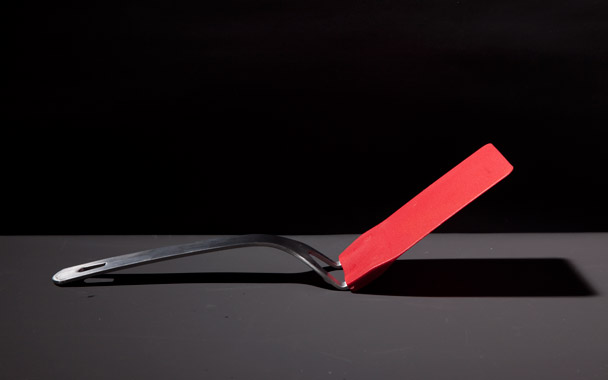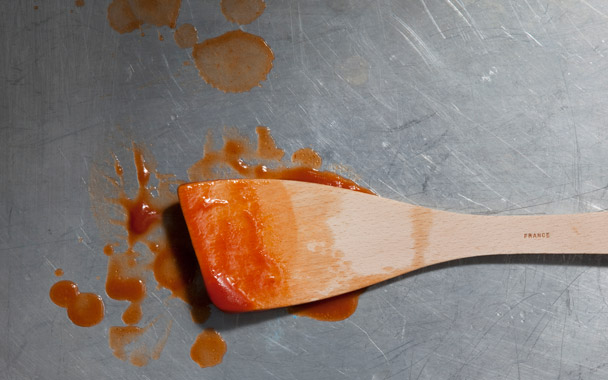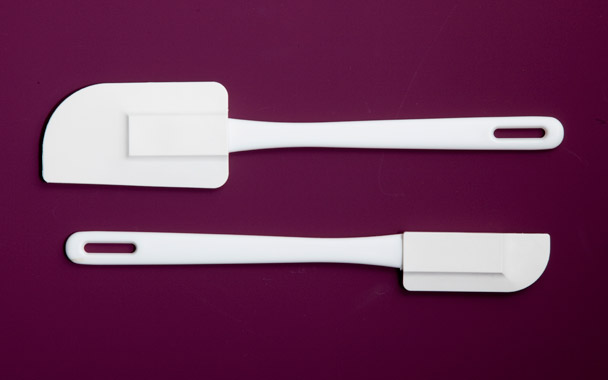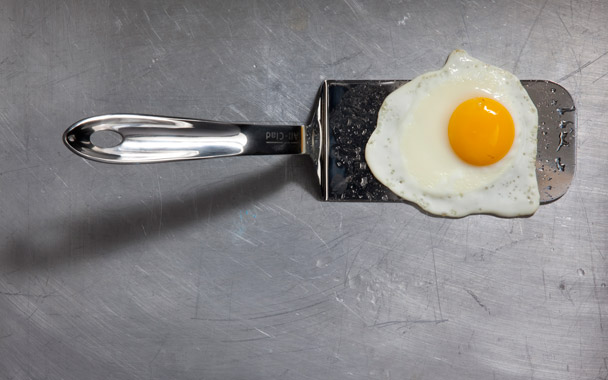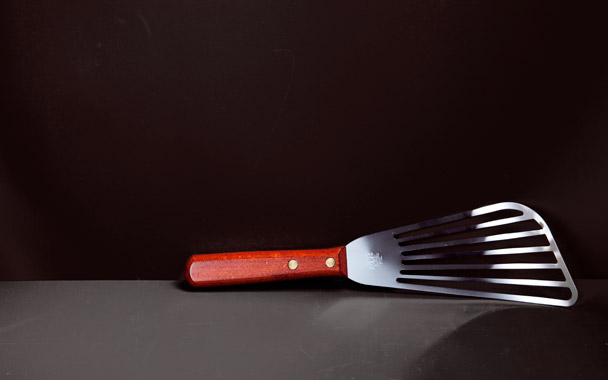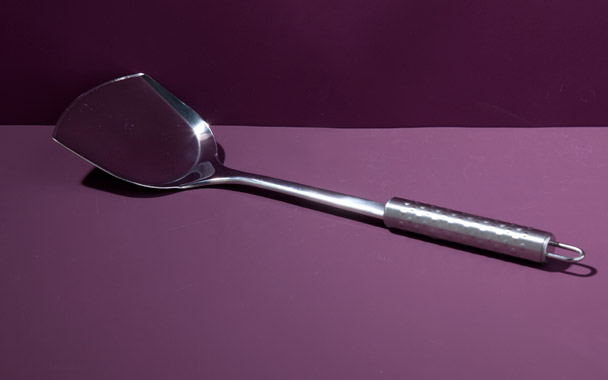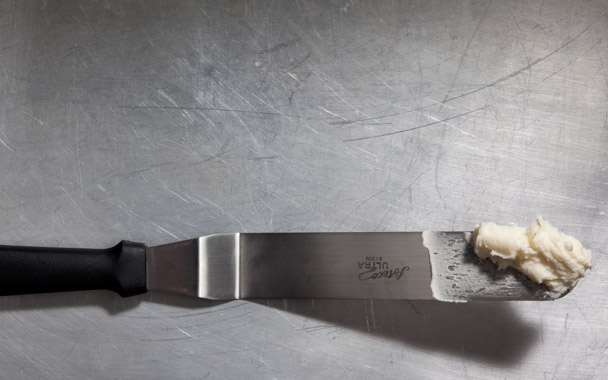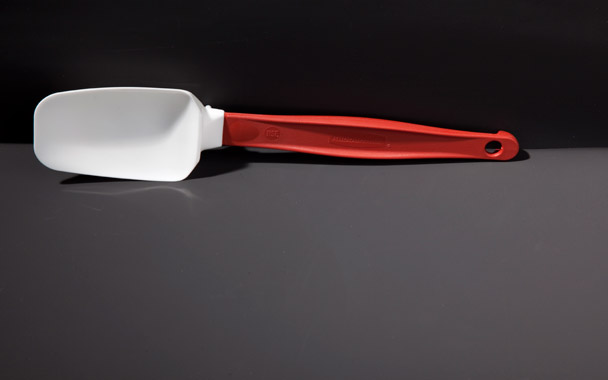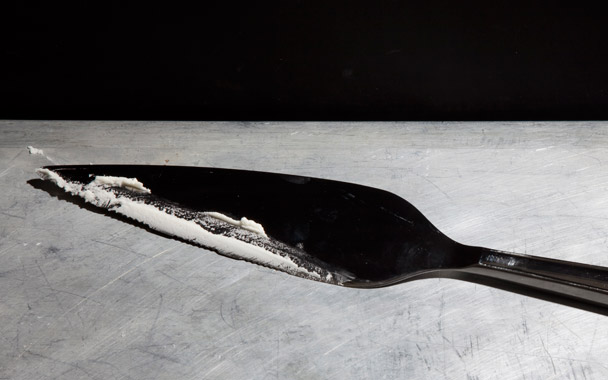Also known as a pancake spatula, this is perhaps the most common turner (a utensil that flips and transfers foods). The blade works well on large surfaces, and the thin edge is perfect for sliding under French toast, eggs, and of course pancakes. Silicone models (like the one pictured here) won’t harm nonstick pans; some versions have slots (which can be large, small, circular, or long, depending on the model of spatula) that help drain oil from foods like chicken cutlets and hash browns. Choose a blade made of silicone (extremely heat resistant), nylon (the edges wear down more slowly than those of plastic blades), or metal (but avoid nonstick-coated metal, which is likely to peel).
(Flexible spatula, $8-$9; williams-sonoma.com)

